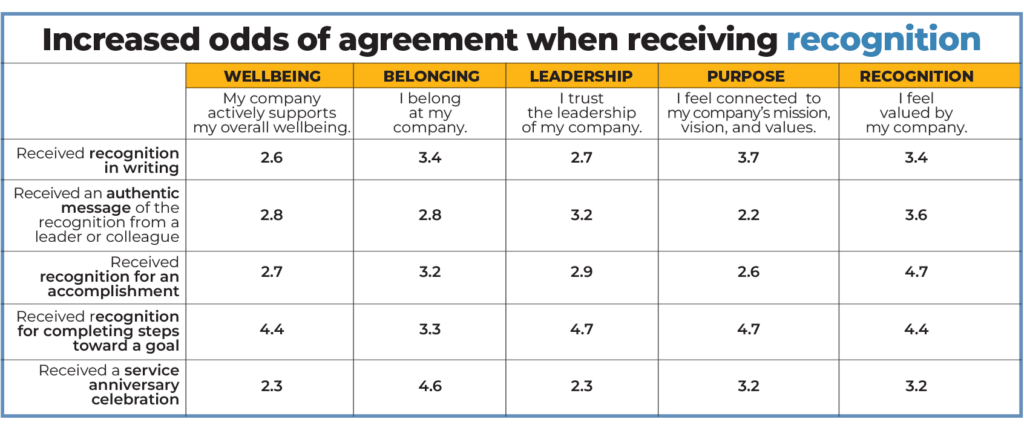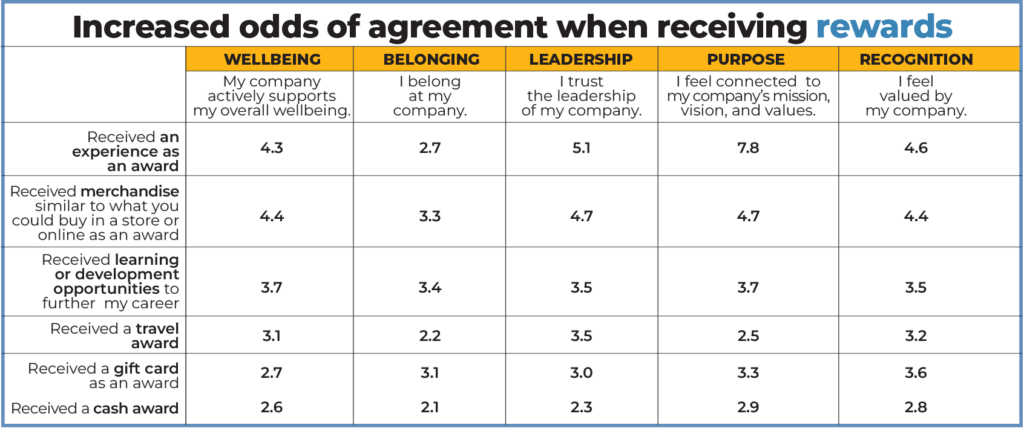But employees in large companies know these pictures aren’t reality. Even in offices with regular desks and plain walls, great cultures can thrive. So what makes a great company culture if it’s not espresso machines and other trendy stuff?
Wellbeing
The company supports their overall wellbeing, including mental and physical health.
Recognition
Recognition is provided fairly, and team members are confident that if they do good work they will be recognized.
Purpose
Team members feel a sense of purpose, are connected to the mission, vision and values, and feel a part of something larger than themselves.
Leadership
Leaders are trustworthy, listen, support team members health and wellbeing, and have a compelling vision for the future.
Belonging
It is safe to express your opinion, be unique, and there is a strong sense of teamwork.
Recognition is a key pillar that can influence the other pillars of wellbeing, purpose, leadership, and belonging. When done strategically, recognition can make employees feel more valued, healthy, connected, purposeful, and trustful of leadership. Employees receiving recognition and rewards had the biggest gains in terms of feeling valued by their companies, but they also were more likely to feel a sense of wellbeing, belonging, purpose, and a trust in leadership.


Recognition can also explicitly support your values. What gets recognized gets repeated, so it’s important to tie recognition to behaviors that reflect your company values. Analyzing recognition data can show which values might be misunderstood or underrepresented. For example, a large life sciences client found that one of their core values was only recognized 10% of the time. They launched a communications campaign to educate employees on this value and incentivized its recognition, doubling the recognition of the value and helping to embed it into the company culture.
While every company’s culture is unique, great cultures share common traits: trust in leadership, support for employee wellbeing, a sense of purpose and belonging, and effective recognition. Remember, a great culture isn’t about having exposed brick walls – it’s about creating an environment that reinforces these pillars and your specific company values.
